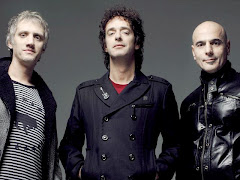Survey analysis
High school name: Saint Francis of Assisi Bilingual High School
Number of surveyed teachers: 4
In Regard to the social framework:
Three of the four surveyed teachers define the social framework based on social strata from upper-middle class to wealthy economic means and well prepared professors. Thus, just one of the teachers defined the social framework as positive environment based on Franciscan teachings.
In Regard to the social strengths:
According to the results, there were different points of view about the strengths present in the high school such as: close-knit teacher corps, good relationship between teachers and students; and some others focused on values as love for nature, and communication while one of the teachers mentioned safety.
In Regard to the social weaknesses:
One of the four surveyed teachers mentioned irresponsibility, disrespect, and lack of hard rules for spoiled students as the most common weaknesses while three of them stressed the lack of concern about less fortunate from some students.
In Regard to the meaning of innovation:
In this part, two of the surveyed teachers commented about innovation as something new that is introduced into something that is routine so as new procedures on products. Then, one teacher defined innovation as something to make our work better and the last one said innovation was associated with a creative point of view.
In regard to what innovation has to do with education:
All of the surveyed teachers stress the idea that educational innovation has to do directly with changing methods and materials to make them more appealing to students and thus it goes by hand with society.
When teachers were asked if they innovate in their classes and why:
All the teachers responded positively to this question even though in different ways: some of them said that it was because learning is a changing process so it needs to be updating day by day, they also mentioned that it was because it was needed to come up with alternatives to boring classes so innovation might enhance students’ motivation throughout a sort of innovative activities. Also, there was a teacher who said that innovation could be applied depending on the groups. But as a sum up it might be said that it is a matter to try different approaches to see what works best.
In regard to innovation examples:
Three of the teachers talked about power point slides, grammar games, vocabulary building through word puzzles, hard work, organization and research as examples and means to achieve innovation while just one of them didn’t answer it.
When teachers were asked what they know about ELTOS:
In this question in particular, any of the surveyed teachers responded. That could indicate that none is infatuated with innovational issues deeply.
When teachers were asked the importance of innovating in education:
Two of the teachers gave different reasons to the importance of innovation education such as: a need for facing a changing world, to enhance motivation on students and make our job more pleasant. One teacher said it was really important to “improve what was once thought best.” The last teacher did not respond.
When teachers were asked about the difference between syllabus and curriculum:
One of the teachers said that curriculum refers to the courses of study and syllabus the contents of the curriculum. Another said that curriculum refers to the contents to be studied and syllabus to a chronological way of organizing the curriculum’s contents. Two of the surveyed teachers did not answer to this question.
When teachers were asked about the British Council:
In this questions all teachers said to know nothing about it.
When teachers were asked about the Natural Approach:
This question was answered just by three of the four teachers in different ways: language acquisition via “comprehensible input”, theory of learning to speak first and the rest of the skills come later, a way to learn by your own or naturally.
When teachers are asked about the difference between language learning and language acquisition:
There were many theories according to the teachers: “language learning as a conscious process and acquisition as an unconscious one”, “language learning comes with rules and stricter elements while language acquisition comes naturally with the environment”, “you can learn a language without acquiring it.”
When teachers were asked about task-based language teaching:
Two of the teachers said it was about a way to teach a language by giving specific tasks to students while two of the teachers did not respond to this question.
When teachers were asked about top-down activities:
None answered to this question.
When teachers were asked about bottom-up activities:
None answered to this question.
When teachers were asked about the context-based approach:
Just one teacher said that it was about “learning according to a context.”
When teachers were asked about curricular innovation:
Just two of the surveyed teachers answer in different ways for example: changing curricula to adapt it to the environment and the implementation of new courses to promote and increase language acquisition.
When teachers were asked about what the teachers’ attitude has to do with the teaching and learning processes:
Two of the teachers answered this question and gave examples such as if teachers are open to new and improved methods, they will have more resources available to promote language acquisition. Also, the fact that we are responsible for our class.
When teachers were asked about the difference between extrinsic and intrinsic motivation:
Two of the teachers answered to this question with arguments like that extrinsic motivation comes from the inside of the person and the extrinsic one is based on external factors that might affect a way of thinking.
Sum Up:
At the end of this particular survey, it is noticed the fact that not all the teachers manage certain knowledge regarding technical terms in education; and it might be said that not all the teachers had a clear idea of what innovation can implied if seen from different other perspectives as in the case of education where almost all of them associated innovation with just “something new” and were not that specific at the time of giving a more related definition. In the sense of the social part, all teachers seemed to know the conditions in which they work and most of the comments were positive. Then, the attitude as well were not that stressed for them due to the fact that all of them agree on the idea of a positive attitude to look for what is best to try.
Universidad Latina de Costa Rica
Survey Applied by Oscar Conejo Chacòn 2009
High school name: Saint Francis of Assisi Bilingual High School
Number of surveyed teachers: 4
In Regard to the social framework:
Three of the four surveyed teachers define the social framework based on social strata from upper-middle class to wealthy economic means and well prepared professors. Thus, just one of the teachers defined the social framework as positive environment based on Franciscan teachings.
In Regard to the social strengths:
According to the results, there were different points of view about the strengths present in the high school such as: close-knit teacher corps, good relationship between teachers and students; and some others focused on values as love for nature, and communication while one of the teachers mentioned safety.
In Regard to the social weaknesses:
One of the four surveyed teachers mentioned irresponsibility, disrespect, and lack of hard rules for spoiled students as the most common weaknesses while three of them stressed the lack of concern about less fortunate from some students.
In Regard to the meaning of innovation:
In this part, two of the surveyed teachers commented about innovation as something new that is introduced into something that is routine so as new procedures on products. Then, one teacher defined innovation as something to make our work better and the last one said innovation was associated with a creative point of view.
In regard to what innovation has to do with education:
All of the surveyed teachers stress the idea that educational innovation has to do directly with changing methods and materials to make them more appealing to students and thus it goes by hand with society.
When teachers were asked if they innovate in their classes and why:
All the teachers responded positively to this question even though in different ways: some of them said that it was because learning is a changing process so it needs to be updating day by day, they also mentioned that it was because it was needed to come up with alternatives to boring classes so innovation might enhance students’ motivation throughout a sort of innovative activities. Also, there was a teacher who said that innovation could be applied depending on the groups. But as a sum up it might be said that it is a matter to try different approaches to see what works best.
In regard to innovation examples:
Three of the teachers talked about power point slides, grammar games, vocabulary building through word puzzles, hard work, organization and research as examples and means to achieve innovation while just one of them didn’t answer it.
When teachers were asked what they know about ELTOS:
In this question in particular, any of the surveyed teachers responded. That could indicate that none is infatuated with innovational issues deeply.
When teachers were asked the importance of innovating in education:
Two of the teachers gave different reasons to the importance of innovation education such as: a need for facing a changing world, to enhance motivation on students and make our job more pleasant. One teacher said it was really important to “improve what was once thought best.” The last teacher did not respond.
When teachers were asked about the difference between syllabus and curriculum:
One of the teachers said that curriculum refers to the courses of study and syllabus the contents of the curriculum. Another said that curriculum refers to the contents to be studied and syllabus to a chronological way of organizing the curriculum’s contents. Two of the surveyed teachers did not answer to this question.
When teachers were asked about the British Council:
In this questions all teachers said to know nothing about it.
When teachers were asked about the Natural Approach:
This question was answered just by three of the four teachers in different ways: language acquisition via “comprehensible input”, theory of learning to speak first and the rest of the skills come later, a way to learn by your own or naturally.
When teachers are asked about the difference between language learning and language acquisition:
There were many theories according to the teachers: “language learning as a conscious process and acquisition as an unconscious one”, “language learning comes with rules and stricter elements while language acquisition comes naturally with the environment”, “you can learn a language without acquiring it.”
When teachers were asked about task-based language teaching:
Two of the teachers said it was about a way to teach a language by giving specific tasks to students while two of the teachers did not respond to this question.
When teachers were asked about top-down activities:
None answered to this question.
When teachers were asked about bottom-up activities:
None answered to this question.
When teachers were asked about the context-based approach:
Just one teacher said that it was about “learning according to a context.”
When teachers were asked about curricular innovation:
Just two of the surveyed teachers answer in different ways for example: changing curricula to adapt it to the environment and the implementation of new courses to promote and increase language acquisition.
When teachers were asked about what the teachers’ attitude has to do with the teaching and learning processes:
Two of the teachers answered this question and gave examples such as if teachers are open to new and improved methods, they will have more resources available to promote language acquisition. Also, the fact that we are responsible for our class.
When teachers were asked about the difference between extrinsic and intrinsic motivation:
Two of the teachers answered to this question with arguments like that extrinsic motivation comes from the inside of the person and the extrinsic one is based on external factors that might affect a way of thinking.
Sum Up:
At the end of this particular survey, it is noticed the fact that not all the teachers manage certain knowledge regarding technical terms in education; and it might be said that not all the teachers had a clear idea of what innovation can implied if seen from different other perspectives as in the case of education where almost all of them associated innovation with just “something new” and were not that specific at the time of giving a more related definition. In the sense of the social part, all teachers seemed to know the conditions in which they work and most of the comments were positive. Then, the attitude as well were not that stressed for them due to the fact that all of them agree on the idea of a positive attitude to look for what is best to try.
Universidad Latina de Costa Rica
Survey Applied by Oscar Conejo Chacòn 2009




.jpg)












No hay comentarios:
Publicar un comentario